The Exorcist
I've been a massive fan of The Exorcist since I saw it when it was released in 1998. Having bought both the theatrical version and The Version You've Never Seen on both R2 and R1 DVD for completist sake (I think this is something unique to hard-core horror fans) in order to own all of the extra features, soundtracks and artwork, the announcement that Warners Bros were releasing a Blu-ray with both versions of the film, brand-new extra features and some of those that were on the DVD but letterboxed in a new, widescreen format. This was a release that made me so desperate to own it that I pre-ordered the set as soon as it was available and was eagerly anticipating the day when the postman pushed the padded envelope through the letterbox.
In the late 1960s, William Peter Blatty heard about the case of a boy in Mount Rainier who was believed to be possessed and underwent an exorcism in 1948. It is believed that at least one of the priests kept a diary of events and Blatty is fairly closed mouthed when it comes to questions over whether he read the diary or not. Whatever the case, his interest in demonic possession, religion and exorcism led him to write The Exorcist, a book that was a smash hit and on the bestseller lists for months in 1971. Unsurprisingly, Warner Brothers approached Blatty with a view to buying the rights to his book and Blatty agreed on the proviso that he would act as a screenwriter and have a production role. Shot in 1973 and released in December of that year, The Exorcist went on to be a phenomenon, one of the most successful horror films of all time, both commercially and critically, with 10 Oscar nominations, winning two, and is, even today, the most financially successful R rated movie of all time.
The Exorcist was the first film that I saw at the cinema that made me realise the power of the medium. It was a midnight showing in June 1998 of the re-released film (thankfully the theatrical version) and I left at about 2 a.m., looked up at the clear night sky and tried to make sense of what I had seen. I don't think it was the time (although that probably had something to do with it) but more to do with me and my state of mind going into the cinema as to why the film had such an indelible imprint on me, changing my life forever. When the DVD was released the following year, I bought it straight away and have probably watched it more times than any other I own.
The film begins with a prologue in Iraq where an elderly man, who we later learn is Father Lankester Merrin, is supervising an excavation. He uncovers an amulet of a fierce looking demon, a huge statue of whom stands nearby. Merrin's reaction (a slightly shocked look before swallowing hard) suggests both fear and recognition and a wonderful shot shows him confronting the statue in a sign of things to come. Tellingly, there is a scene when he is at Woodstock and someone comes up to him with a telegram and, rather than reading it, he puts it in his pocket as he knows what is contained on the missive and the tasks that awaits him in Georgetown.
Abruptly cutting to Georgetown, a suburb of Washington D.C., where Chris MacNeil is shooting a film about student rebellion, reflecting the generation gap of the day. She is balancing work with raising her twelve year old daughter Regan, a lively and loving young girl who has a close and normal relationship with her mother. Soon things in the MacNeil household prove to be not quite right as Chris hears scratching in the attic but can't find any rats, Regan is often found sleeping with her sheets and blankets down and her windows wide open, letting the freezing air in, but slightly odd becomes very odd when Regan walks into the tail end of a party her mother has hosted, looks at an astronaut and tells him 'You're going to die up there' before urinating on the floor.
Her behaviour steadily worsens to include a violent temper and ferocious spasms, forcing Chris to seek medical help. At first doctors attribute the change in her daughter to a suspected lesion in the temporal lobe of the brain and try a variety of tests and medication from Ritalin to Thorazine before resorting to almost barbaric spinal taps and scans including a rather horrific arteriogram. When Regan's condition continues to deteriorate and no evidence of a lesion is found, the doctors suggest that she see a psychiatrist. When Regan is put under hypnosis and the psychiatrist tries to talk to "the person inside of Regan", she emits a terrible odour, roars with her throat bulging before grabbing his testicles and forces him to the floor, causing her to be physically restrained. As all of the medical possibilities have been exhausted, the doctors ask if Chris or Regan have any religious beliefs and then suggest that an exorcism may help to 'shock' Regan back to normality -- not because she would believe that the exorcism would work but the belief in the power of exorcism would force the Demon out this.
This brings Chris into contact with Father Damien Karras, Georgetown University's psychiatric counsellor, who is suffering his own crisis of faith and doubts about both his own sexuality and vocation. Karras, a trained psychiatrist, has no belief in exorcism and has never met a priest who has performed one but is convinced by Chris to have a look at her daughter neither as a priest nor doctor to see what he thinks as a human being. Karras is met by a horribly mutated figure that claims to be the devil, exhibits telekinesis, inexplicable knowledge of events and vomits green bile over him. A subsequent visit convinces the sceptical Karras that an exorcism is not the answer, but does once performed himself as it needs all the criteria laid down in the Roman Ritual. The church agrees to the ritual as long as it's performed by Father Merrin, a man with experience, with Karras assisting as someone with a medical background should be on hand to monitor Regan's physical well-being.
The performances are absolutely spot-on from the lead actors to those in small roles including an uncredited William Peter Blatty as the producer of Crash Course, the film on which Chris MacNeil is working. Although the role of Chris MacNeil was written for Shirley McLaine who took herself out of the running when she appeared in The Possession of Joel Delaney in 1972, I can't think that she would have been any better than Ellen Burstyn (who, along with Jason Miller and Lynda Blair, was Oscar-nominated) who does such a magnificent job as the working mother who does everything she can for her daughter but loses her temper when her husband, from whom she is separated, forgets Regan's birthday and manages to hold herself together throughout everything that is happening to her daughter. As an unknown girl who was either 12, 13 or 14 when she was cast, depending on who you listen to, Lynda Blair is terrific but she rather magnanimously puts most of the credit for her performance down to the way she was directed by William Friedkin. The small roles for Jack MacGowran, Kitty Winn and Lee J Cobb (as Burke Dennings, the director of Crash Course, Sharon Spencer, Chris MacNeil's secretary, and Lt Kinderman respectively) are spot on and all of them are terrific. As the two priests, Jason Miller and Max von Sydow are utterly convincing with von Sydow able to project all the authority and inner strength that Father Merrin is supposed to have. Although she wasn't mentioned in the original press releases and was even not in the credits for the first few years of the film, something she had to fight for, Mercedes McCambridge is astonishing as 'the voice of the Demon' and her vocal gymnastics are absolutely extraordinary and, when you consider the lengths that she went to including swallowing raw eggs, drinking whiskey and smoking strong cigarettes, it is only right that her performance should be recognised as something very special.
The 2000 Release
By all accounts, the editing process was a battle of wills between William Friedkin and William Peter Blatty with Friedkin, who wanted a more cut down version, prevailing over Blatty who was in favour of more scenes and additional dialogue. The two men didn't speak for a long time afterwards but, at the end of the 20th Century, they buried the hatchet and Friedkin agreed to look again at the film. What followed was an attempt to placate Blatty by creating a 'writer's version' including all of the scenes that Friedkin removed in 1973. The version released in 2000 was marketed as 'The Version You've Never Seen' and that line was on every DVD version but, on this box, it is now called the 'Extended Director's Cut'.
By taking advantage of CGI, there are numerous shots of the demonic face that is seen briefly during Karras' nightmare in the theatrical version plus, near the end, a very brief glimpse of Karras' mother on Regan's bedroom window just before he plunges through it to his death on M Street. As well as these shots that are incorrectly termed 'subliminal' (they aren't as you can actually see them), there is an additional 10 minutes of extra material plus a different beginning and ending that is more in line with what Blatty expected from the film.
This release (just as every re-release of the theatrical version had been and continues to be) was a massive hit but the financial success of every subsequent screening of The Exorcist makes it hard to distinguish which version audiences prefer. I can only speak for myself but I think that Friedkin was right the first time and Blatty was looking at the film with his writer's hat on and being very protective of the screenplay he wrote which is based on his book. There are certain scenes that don't really need to be there, adding nothing to the sense of growing unease and horror and the conversation between Fathers Merrin and Karras in the middle of the exorcism only reinforces what the audience (well, most of them anyway) already knew. Given a choice, I will always go for the 1973 theatrical version even though Friedkin has given this version his seal of approval
Overall
I've seen The Exorcist more times than I can remember and it hasn't lost its power to shock, amaze and horrify. I have studied it academically and read widely about the filming and the underlying themes, such as whether it is, as Mark Kermode contends, a paedophobic tract, whether director William Friedkin and writer William Peter Blatty have much truck with them or not and still don't tire of watching the film. I don't know how many times more times I'll see it but it will be well over a hundred times. It was rightfully nominated for 10 Academy Awards, winning two, and still is the most financially successful R rated movie in the United States. I consider it the greatest horror movie ever made and it's amazing just how effective it is nearly 40 years after it was made.
The Disc
Extra Features
The set is split into two discs, the first with the Extended Director's Cut and the second containing The Original Theatrical Cut with different extra features on both.
Disc one has a commentary by William Friedkin and you can really tell that his heart isn't in it as it pales in comparison to his commentary on the theatrical version and he basically gives up trying to provide an analysis or historical background before he has begun, choosing instead to give a blow by blow commentary which is more akin to an audio descriptive track.
Much more interesting are the three documentaries, the longest of which, Raising Hell: Filming The Exorcist (30:12, HD) takes contributions from Blatty and Friedkin going right back to how Friedkin became the director to the special effects and the editing process. Friedkin gave a documentary crew permission to film on set and they capture some extraordinary images such as Lynda Blair and Max von Sydow in make-up, the improvised chair that enabled Friedkin to get the shot of Sharon and the two doctors running up the stairs as well as some behind the scenes photographs. I thought I knew pretty much all there is to know about The Exorcist and have been known to bore people silly with useless trivia but I still found this to be an informative and very well made documentary containing some footage and information that pretty much every fan will not have previously seen.
Georgetown Then and Now (10:30, HD) has a voiceover by Friedkin with shots of various locations in Georgetown and how little they have changed over the years. He also talks about how great it was to film in Georgetown and Blatty says how grateful he is to the university that gave him a scholarship enabling him to study where he wanted.
Faces of Evil: the Different Versions of The Exorcist (11:20, HD) goes into detail about why there are two different versions, how the new version in 2000 came about and how Blatty and Friedkin feel about the two different cuts. Although I knew the basic reasons for the different cut in 2000, I found this to be a very revealing watch with both Blatty and Friedkin speaking candidly but I'm not sure whether Friedkin's opinion of the 'Extended Director's Cut' is genuine or just there to give this Blu-ray release a stamp of authenticity as not many people would want to watch the longer version if it was something that William Friedkin disliked. I'm prepared to take him at his word as he is a master filmmaker and not the sort of person who would lie in order to sell something he hates.
The disc also contains several trailers, TV and radio spots that can be played individually or together (in each section) using the 'play all' function. Although I've seen these many times, it is still interesting to watch (and hear) the different ways in which the film was marketed.
On to disc two which, when you select 'play' begins, just as all the previous releases did, with an introduction by William Friedkin in a rather fetching salmon pink cardigan. As I've seen this introduction more times than I care to remember, I always skip it now as I can virtually tell what Friedkin is saying word for word. This introduction is also available to watch separately in the extra features section and I would rather it had stayed there or was available as an option than something that appears when you want to see it or not.
This version has two commentaries, the first with William Friedkin which is a fairly lively and informative affair as he speaks very well and at length about various aspects of the film. William Peter Blatty's commentary is really a chore as he stops speaking about halfway through the movie and doesn't appear to be interested in recording the commentary at all. After he has finished there is some fascinating rehearsal footage from Mercedes McCambridge trying to perfect 'the voice of the Demon'.
The best addition as far as I'm concerned is Mark Kermode's brilliant documentary from 1998 The Fear of God: The Making of The Exorcist (77:07, SD) which originally aired on Channel 4 and was amazingly cut down for the UK DVD so Kermode doesn't appear in it at all despite him writing, producing and fronting the documentary! The most complete version is always been on the R1 DVDs but these have been letterboxed so it is disappointing to see this in exactly the same format as on the R1 DVD versions. If you haven't seen the documentary, this is clearly the work of someone who appreciates and loves the film as Kermode goes to different locations and speaks to various cast and crew members about making the film and the so-called 'curse of The Exorcist'. This is an extremely well made and researched piece that works on repeated viewing so long as you leave a sizeable gap in between each one.
The Interview Gallery (9:02, SD) comprises interviews with Friedkin and Blatty, who are sitting side-by-side with various things in front of them on the table, as they talk about The Original Cut, The Final Reckoning and Stairway to Heaven. These were available on previous DVD releases but it was good to watch them again.
Original Ending (1:42, SD) is the version that is seen at the end of the extended version where you have the exchange between Lt Kinderman and Father Dyer which shows that Karras lives on through his close friend.
As with the first disc, there is a selection of trailers and TV spots which are always good to sit through every once in a while as it's probably been five years since I went through them and it was interesting to watch them again.
The Picture
The Exorcist has always been an extraordinary visual experience from the opening in Northern Iraq to the amazing scenes in Regan's bedroom during the exorcism. It is shot with amazing camerawork and lighting by cinematographer Owen Roizman and the make-up effects by Dick Smith and Marcel Vercoutere haven't aged as much as I expected -- I tend to watch this at least several times a year and have never been disappointed by the make-up, puppetry, special effects (making the bed shake and rise and making Regan float during the exorcism). It's not just the special effects that grab your attention as Max von Sydow underwent hours of make-up to transform him from a man in his mid-40s to someone who looks at least 75.
This high-definition transfer is an incredible upgrade on the DVD versions with much deeper contrast with no lack of detail in the darker scenes or banding and ghosting when the light level drops. Additionally, the colours are bold and vibrant and the amount of grain has been reduced but not completely vanished in a process where the DNR has gone into overdrive.
The quality between the two versions still differs with the extended version still looking better than the theatrical cut with the CGI faces and other elements that were added when the whole film was digitally upgraded. In addition to the myriad demonic faces that are seen throughout the extended version, the one that impresses me is when Father Karras' mother appears at the window.
Please note that all screenshots have been taken from the Theatrical Version.
The Sound
This has the same sort of effect as The Texas Chain Saw Massacre and Halloween as there are sections that are almost unwatchable because of the Oscar-winning sound design rather than the images and it is such a well designed soundtrack that the visuals are complemented and enhanced by the sound design.
This high-definition soundtrack, in DTS-HD Master Audio 5.1 on the theatrical cut and 7.1 on the extended version means that you hear little noises and sounds that didn't appear to be there on the DVD and it is an immensely powerful soundtrack that makes the slow build up all the more innocent and then horrifying, especially during the medical tests.
There isn't a score in the traditional sense but the music by Mike Oldfield and Krzysztof Penderecki is haunting, creepy and downright terrifying especially when it is accompanied by the sound design. The extended version does have a score by Steve Boeddeker but I feel that this really doesn't add anything to what was already a perfect soundtrack but it is an interesting addition that is worth your attention.
Each version contains myriad sound and subtitle options so check the disc details for the full list.
Final Thoughts
This was the most anticipated release of the year as far as I'm concerned and I don't feel let down in any way whatsoever. If I did have to pick faults, it would be that things such as the interviews, the Fear of God documentary and original ending are only presented in standard definition and letterboxed rather than in high definition filling the 16:9 widescreen plasma. Otherwise, this is a superlative release by Warner Home Video although it is a little puzzling that the UK gets a different version from the US which is housed in a 'book' with a booklet. Being the sad obsessive that I am, I have ordered the US version just, as with the DVDs, for the sake of completion.
This is easily one of the best releases of the year and no horror fan's collection will be complete without it on their shelves. As Friedkin says in the introduction, close the curtains, turn up the volume and watch the film with an open mind as you will get out exactly what you bring to the viewing.
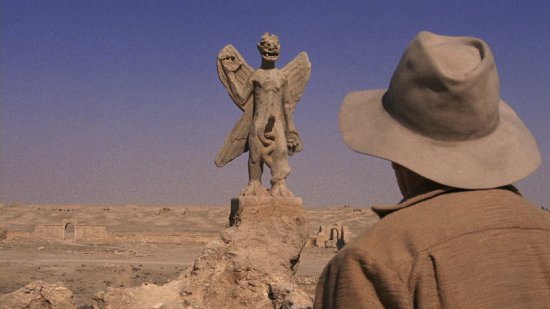
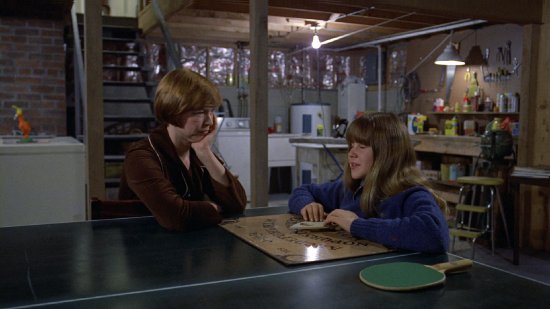
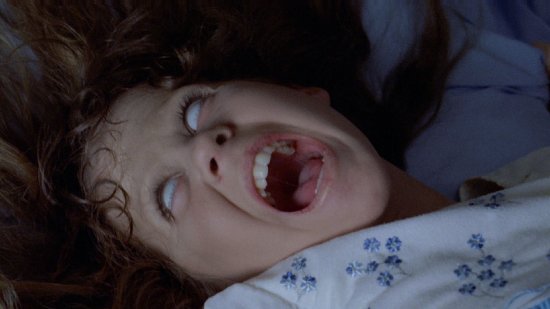
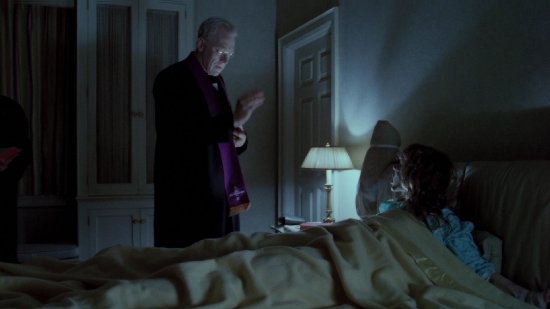
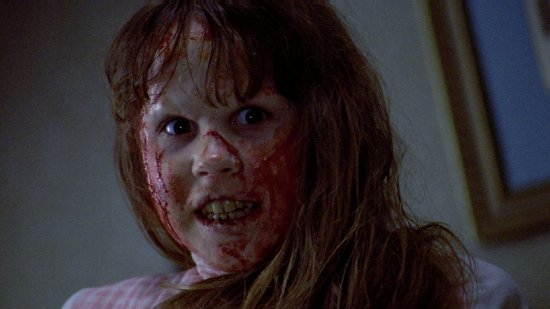
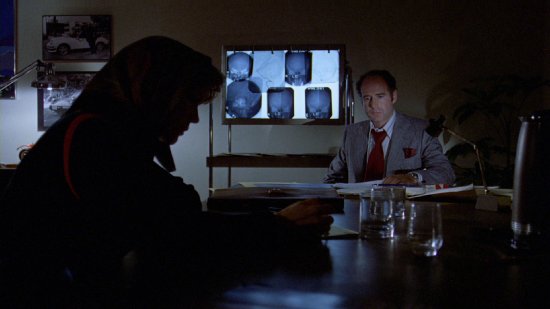
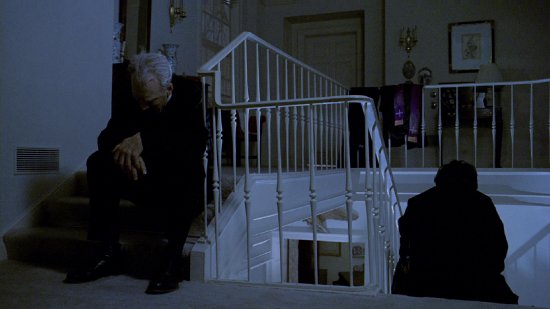
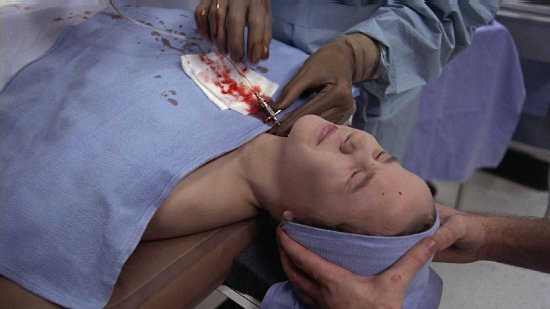
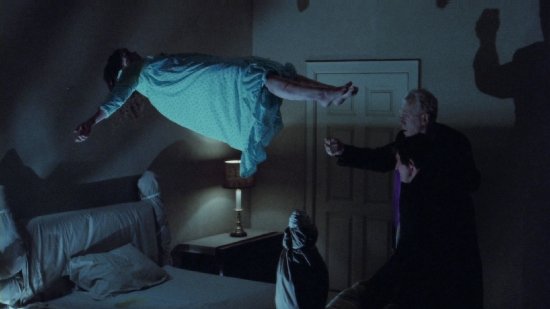
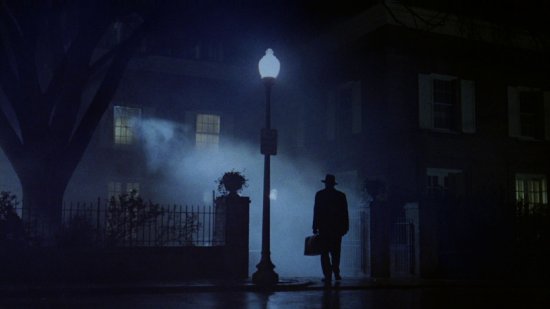
Your Opinions and Comments
Be the first to post a comment!